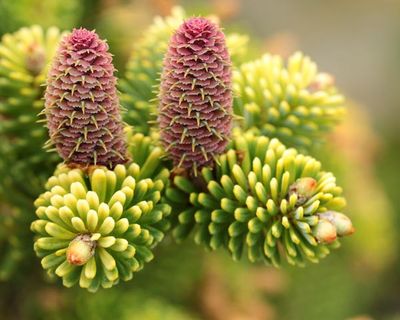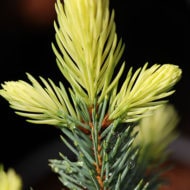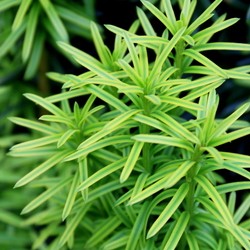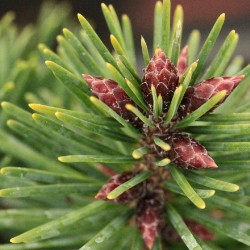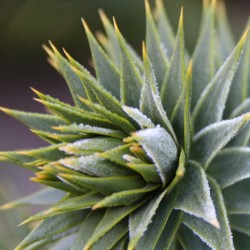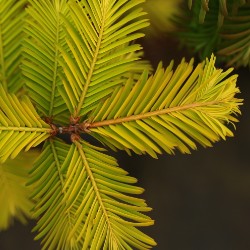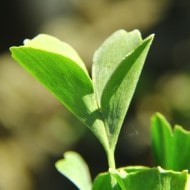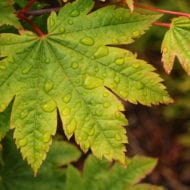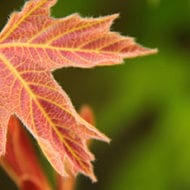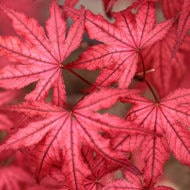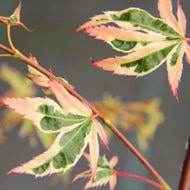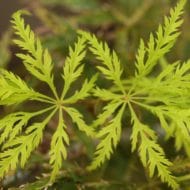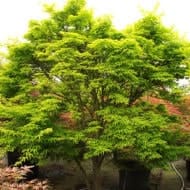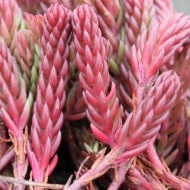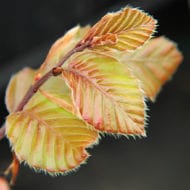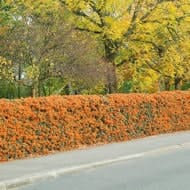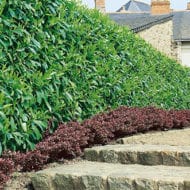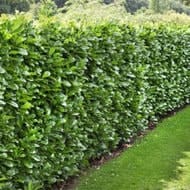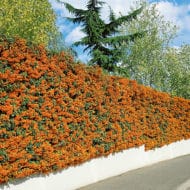Welcome to the first of several blog posts that feature a glorious variety of Japanese maples. First, we will begin with a couple posts that display their beautiful spring colors. In October, we will feature many of the same varieties and show off their fall color!
One of our favorite maples for spring color is Acer palmatum ‘Peaches and Cream’. Spring leaves are cream with deep green veins and a rose blush. Each leaf lobe tapers quickly to a narrow point. This unique leaf shape and incredible spring coloration make it one of the most noticeable varieties at the nursery. As spring turns to summer, the leaves exhibit a vibrant peach color on the newer leaves while the older leaves brighten to a rich cream color, giving this maple its name. We only have a limited quantity available, so be sure to check out our web listing before they are all gone!

Acer palmatum ‘Peaches and Cream’
The prominent leaf venation shown by ‘Peaches and Cream’ is known as reticulation. Many maples have this pattern especially on the first leaves of spring. Amagi Shigure is another striking variety showing this phenomenon. However, the bright pink with deep purple veins is much different from that of ‘Peaches and Cream’. With the warmer temperature comes a change in color from a bright reddish pink to a darker burgundy color. In late summer, a more typical green color becomes evident, but the newer leaves are always highlighted with a glowing, ruddy flush. This maple is a fairly slow-growing and upright variety so it fits in many gardens. While we do have a variety of sizes available, this variety is difficult to propagate and therefore in limited supply.

‘Olsen’s Frosted Strawberry’ is a similar variety with a very tasteful name! However, this one remains lighter colored throughout the summer. Strawberry-pink color with deeper burgundy and purple tones underneath is noticeable during spring and much of summer. Eventually, the older leaves become a light green with white highlights, but the second push of new growth carries on the burst of color with a nice contrast. Since ‘Olsen’s Frosted Strawberry’ is a lower-growing variety, it is unique from other similar varieties.

One of the most popular of the “reticulated” varieties at the nursery is ‘Mikazuki’. The Japanese name means crescent moon. Raspberry-colored new growth emerges in spring, giving way to delicate leaves with narrow lobes and slightly serrated leaf edges. By mid-summer the older leaves have transformed to a light green with white overlay just as a second flush of growth appears at the branch tips, giving a multi-colored effect when most others are looking drab. ‘Mikazuki’ eventually becomes an upright tree with a bushy canopy, and it is available in a variety of sizes.

Another one of our favorite maples is ‘Manyo no sato’. This incredible variety has some of the most unique variegation imaginable. Because of its unpredictable pattern, it is difficult to describe. Throughout the spring and summer, several color changes occur, making it even more stunning. The first leaves begin with a bright combination of orange and burgundy. Later in the spring, the orange blush fades from the leaves, giving them more of a green and purple effect. Later in summer, the purple portions darken to a chocolate color, giving more noticeable mint-green coloration to the rest of the leaf. As a slow-growing tree with thin leaves, this tree is very desirable and usable in almost any landscape.

Although ‘Manyo no sato’ has persistent and evolving variegation through the spring and summer, other varieties have very fleeting but stunning variegation. Acer palmatum ‘Spring Delight’ has remarkable crimson red tips in early spring, later becoming less noticeable as the leaves become more solid green. Unlike the others discussed so far, this variety is a laceleaf, with delicate, deeply-dissected foliage. There is a beautiful crop of 5 gallon plants currently available for purchase too!

‘Tsuma gaki’ is another variety that has bright red tips but is broadleaf. On the upper portions of the tree where it is most exposed to sunlight, the centers of the leaves lighten to a creamy white color while the ruddy color persists on leaf edges. Shaded portions of the tree evolve to a bright green color, giving a multicolored effect during the midsummer. This variety is very difficult to propagate, but we do have a few beautiful 3-gallon plants available! The very similar ‘Tsuma beni’ is one that we alternatively propagate as well.
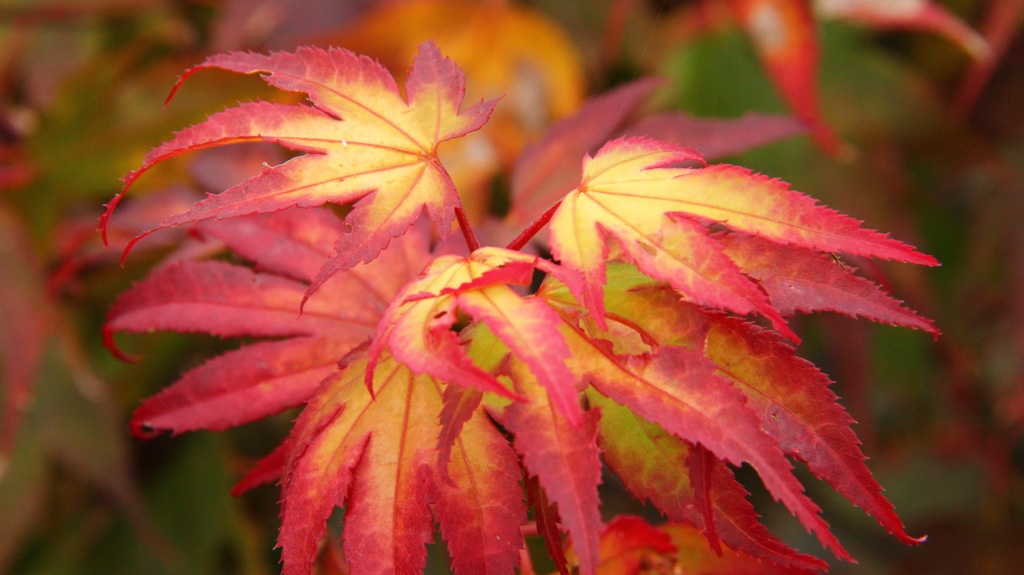
One of the best slow-growing varieties that is rather dense, has great color and a beautiful structure is ‘Kuro hime’. This maple’s name in Japanese means “black princess,” giving nod to its dark-green summer leaves. However, when the new growth comes out in spring, the petite leaves are a stunning orange-red! Perhaps the most unique characteristic of this maple is its dwarf growth rate and compact, globose habit. Ten-year-old plants are only a couple feet tall and wide! We have these currently available in smaller or larger sizes.
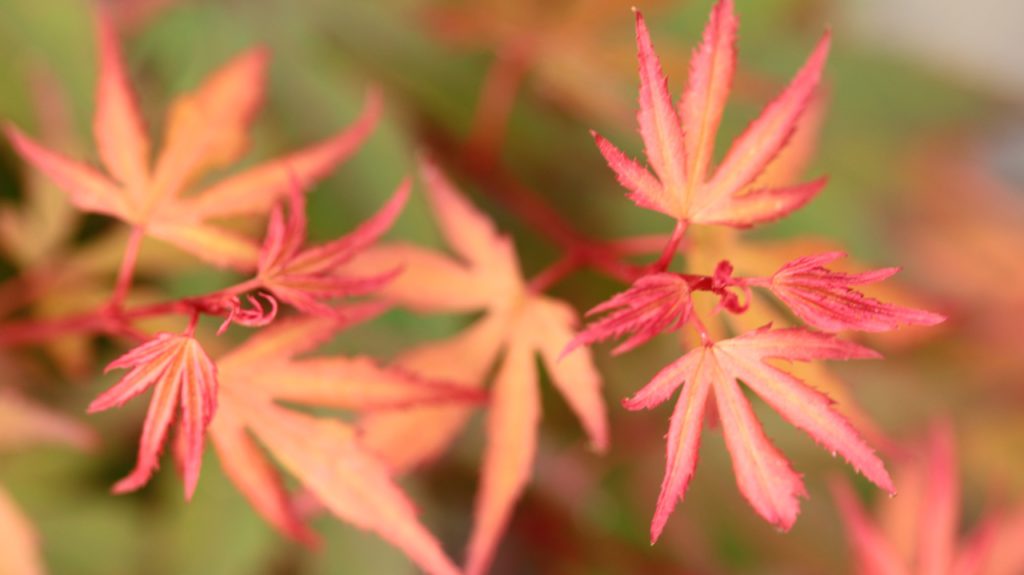
‘Taylor’ is one of very few maples that show vivid hot pink color. In spring, many leaves are completely pink while others have some green portions. By summer, most of the leaves are predominantly green with bright pink margins, creating a stunning color contrast. This brand new variety is very uncommon as of yet and will soon become very popular! Perhaps the most outstanding color of any maple. Right now we only have some smaller sizes available, but we will be propagating this one for many years to come!

Another variety that exhibits bright pink color is ‘Hana matoi’, but this one is vastly different from ‘Taylor’ in that the leaves are delicate and lacy and the pink color is set against a deep burgundy background. All through the spring and summer, the color contrast is a marvelous swirling pattern of pink, purple, and even some reddish color. There are only a very few variegated laceleaf varieties. The unique coloration and low-growing, mounding form make this variety incredibly desirable. We only recently started propagating this variety, so it is available in smaller sizes.

With the darker, red and purple leaves, it is nice to pair a brighter golden or yellow leaf variety. One of the most striking varieties with this coloration is Acer shirasawanum ‘Jordan’. This cultivar is a Shirasawa or Full Moon maple. The spring leaves emerge a yellowish orange color, later changing to a glorious butter-yellow. In the more sun-exposed areas of the tree, the leaves will brighten further to a near white color! By late summer, the seeds, or samaras, have matured to a glowing pink, standing out brilliantly against the creamy leaves. It is important to note that this species is typically hardier than the more typical Acer palmatum we have discussed so far. While Acer palmatum is generally hardy to Zone 6, Acer shirasawanum more reliably grows as low as Zone 5.

One final maple with a leaf structure we have not discussed thus far is Acer palmatum ‘Koto no ito’. The Japanese name of this variety means “beautiful harp strings,” which references the thin lobes of the leaves. The fine-textured leaves show a vibrant green color in spring and summer, later transforming to a yellow-orange fall display. This is a fairly compact and slow-growing strapleaf variety that is always in high demand.

Make sure you check back for another spring maple blog post before we show off their fall colors!


